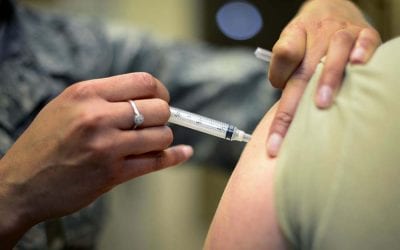Last week, the U.S. Senate voted unanimously to require the cruise industry make their ships and cruises safer. The International Cruise Victims Association (ICV), a champion of cruise safety, has hailed the legislation and declared “Victory!”
I’m more reserved about the legislation. Most of the new rules are born out of common sense, and are excellent, but I see two major lingering problems with the legislation, which I believe are easy to fix.
The Senate version of Cruise Vessel Security and Safety Act of 2009, is slightly different from that passed by the U.S. House of Representatives, so it will be going to a conference committee, to iron out the details. It’s expected to reach and be signed by the President, soon.
Once law, cruise lines will be required to equip all stateroom doors with peep holes and safety latches. Hotels have been using these devices for a long time. “Time sensitive” technology stateroom keys, used even by the least expensive hotels for years, will also be required.
Ships will have to use the latest technology to detect passengers falling overboard, including capturing images of the incidents, and they would be required to be up-to-date with US Coast Guard fire safety regulations.
A difference between the two bills is the guard rail requirement. The House version calls for rails at a height of 42” above the deck (essentially standard on most ships today), while the Senate version is 54”. Groups including the ICV pushed for the higher railings. The House version is based on OHSA’s 1926.502(b)(1) 42” requirement.
In my July, 2008 article, Is Congress doing enough make cruise passengers safe? I wrote about the guard rail requirement. I continue to believe the 42” requirement is correct. The Senate railing height would block passengers’ view of the sea while sitting on deck, and make it difficult for many to stand and scan the sea, or take photographs.
More important, I believe the extra foot of the Senate requirement will encourage risky behavior, such as passengers dangerously standing on chairs and tables, at the railing, to get a better look. I’ve already seen that behavior on ships which have higher railings in some areas.
I think the unintended consequences of the Senate requirement will more than outweigh its positive attributes, and I call on the Senate to accept the House requirement.
I also call on Congress to add missing railing requirements to require ships include enough addition railings, and or barriers between the top railing and the deck to preclude children from going overboard under the railings.
Cruise lines will be required to create and implement procedures and restrictions for crew member access to passengers’ staterooms, and when access is permitted. They must develop a plan to ensure the rules are followed.
To combat crime, ships will be required to maintain video surveillance, almost ship-wide, (not in staterooms, and other private areas) to assist in crime documentation, and prosecution. Requirements for the retention of the video will be determined by the Coast Guard.
Cruise lines will have to provide a Criminal Activity Prevention and Response Guide to each passenger, describing the ship’s medical and security personnel on board to prevent and respond to criminal and medical situations, describing the procedures and rights for passengers with regard to crime, and explaining what law enforcement is available to them, for the most serious crimes, and other offenses. To date, many crime victims have reported it was impossible for them to find out what their rights were, and to get outside help.
The legislation takes cases of sexual assault seriously. Ships will be required to have supplies of anti-retroviral and other medications designed to prevent sexually transmitted diseases after a sexual assault. They will be required to employ and have on board medical personnel trained to deal with such assaults. They will be required to carry “rape kits” on board to aid in the apprehension and conviction of the perpetrators of such crimes.
Cruise lines will finally be required to record and disclose all passenger complaints of all crimes, to law enforcement officers, specifically including crimes of violence, and thefts valued in excess of $1,000. Hopefully other countries will pass similar legislation, as this only applies to ships on voyages which embark or disembark passengers in the US.
The law will require ships’ personnel to preserve crime scenes for appropriate law enforcement officers. The cruise lines will be required to train ships’ security in crime scene preservation. This is critical to help to bring criminals to justice.
Reviewing the stories of ICV victims, and others in the news, it would appear that many ship board incidents involve excessive drinking, and other risky behaviors, which many believe were in part driven by drinking alcoholic beverages.
In Pennsylvania it’s illegal to sell alcoholic beverages to a person who is visibly or obviously intoxicated. Those who serve the intoxicated are held responsible for their actions while drunk. I have seen cruise ship personnel serve obviously drunk people often. I have seen cruise passengers stagger down ships’ halls and decks.
If we really want to make cruise ships safer, the cruise lines must be held accountable for continuing to serve intoxicated people more liquor.
I call for Congress to include a “dram shop” regulation similar to the one in Pennsylvania. I believe this is the one essential requirement which could make passengers considerably safer, notably missing from the current legislation.
After many years working in corporate America as a chemical engineer, executive and eventually CFO of a multinational manufacturer, Ned founded a tech consulting company and later restarted NSL Photography, his photography business. Before entering the corporate world, Ned worked as a Public Health Engineer for the Philadelphia Department of Public Health. As a well known corporate, travel and wildlife photographer, Ned travels the world writing about travel and photography, as well as running photography workshops, seminars and photowalks. Visit Ned’s Photography Blog and Galleries.


